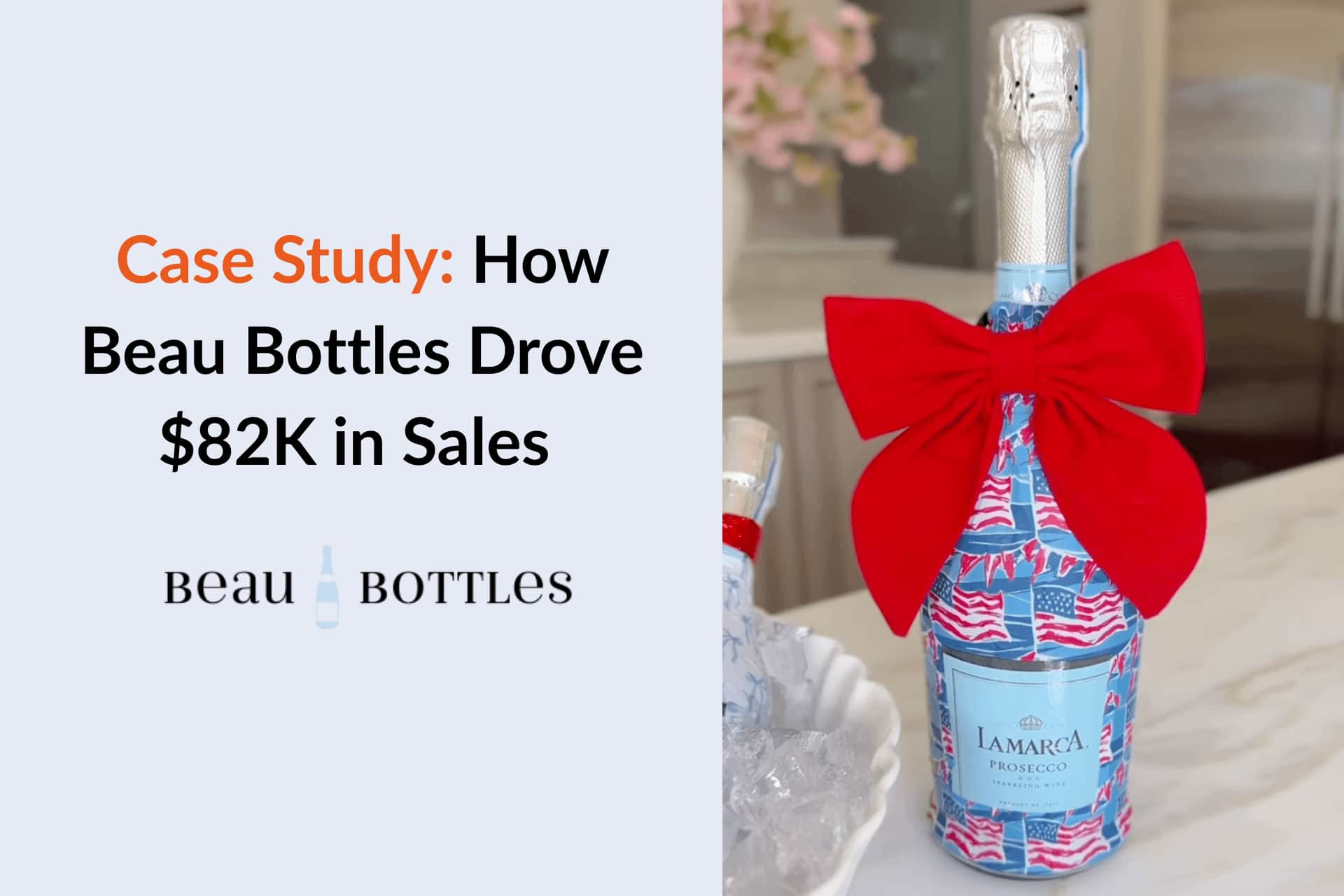





Hollyfy has quickly gained popularity as an influencer marketing platform, offering a variety of tools for managing campaigns, tracking metrics, and connecting with influencers. However, many users have reported frustrations with the platform, including a steep learning curve, limited customization options, and customer service delays.
These issues have prompted marketers and businesses to search for alternative solutions that better meet their needs in terms of flexibility, support, and overall user experience.
In this article, we’ll explore the top 10 Hollyfy alternatives in 2025, based on features, pricing, and reviews from industry professionals and users. The alternatives we will delve into are:
Users seeking alternatives to Hollyfy often cite several specific pain points that hinder their experience with the platform. Based on user feedback from forums and review sites, here are four key reasons why marketers are exploring other options:
Many users have reported that Hollyfy's interface is not intuitive, requiring significant time and effort to navigate effectively. This complexity can lead to frustration, especially for teams without dedicated technical support.
Feedback indicates that Hollyfy lacks advanced customization options and automation capabilities, making it challenging for brands to tailor campaigns to their specific needs and scale their influencer marketing efforts efficiently.
Users have expressed dissatisfaction with Hollyfy's customer support, citing slow response times and inadequate assistance, which can delay campaign execution and resolution of issues.
Some marketers feel that Hollyfy's pricing does not align with the value provided, especially when compared to other platforms offering similar or enhanced features at more competitive rates.
Our comparison focuses on several key aspects:

Best For: Hollyfy is ideal for brands looking to integrate with content creators across multiple media formats, including traditional social media platforms and newer formats like podcasts and video games.
Platform Coverage:
Pricing: Based on our research Hollyfy offers custom pricing (available upon request). There’s a 5 day free-trial available.
Reviews: 4.8 / 5.0 (G2)
Ease of Use (UX/UI): Users have noted that Hollyfy's interface is clean and intuitive, making it easy to navigate and use, even for those with limited technical expertise. New users can quickly set up showcase pages and begin exploring potential collaborations with minimal setup.
Customer Support: Customer support is accessible via email and integrated messaging within the platform. While specific response times are not disclosed, users have expressed satisfaction with the platform's support services.

Best For: Influencer Hero is ideal for growing D2C brands and eCommerce teams looking to scale their influencer marketing campaigns with deep insights, multi-platform support, and advanced automation tools.
Platform Coverage:
Pricing: Influencer Hero offers flexible pricing plans to accommodate growing brands. All plans include core features and can scale as the influencer program grows.
Reviews: 5.0 / 5.0 (Capterra)
Ease of Use (UX/UI): Influencer Hero is known for its intuitive design, user-friendly interface, and streamlined dashboard. The platform offers automated workflows, customizable email templates, and a drag-and-drop campaign setup, making it easy for users to manage influencer campaigns at scale.
Customer Support: Influencer Hero delivers exceptional customer support with:
Hollyfy is focused on media integrations beyond social media, offering brand placements in TV shows, movies, podcasts, and video games. While it also offers AI-powered influencer matching and campaign management, its platform is more tailored to traditional media collaborations, and its social platform integrations are limited.
On the other hand, Influencer Hero is a comprehensive influencer marketing platform that excels in multi-platform support (including Instagram, TikTok, YouTube, etc.) and eCommerce integration. It stands out with advanced AI-powered automation, influencer discovery, and CRM capabilities, making it a great choice for brands looking to scale influencer marketing across digital channels with a focus on ROI.
Pricing for Influencer Hero starts at $649 per month for up to 1,000 creators, scaling with the brand’s needs, while Hollyfy offers custom pricing and a free 5-day trial but lacks transparent pricing details for all users.
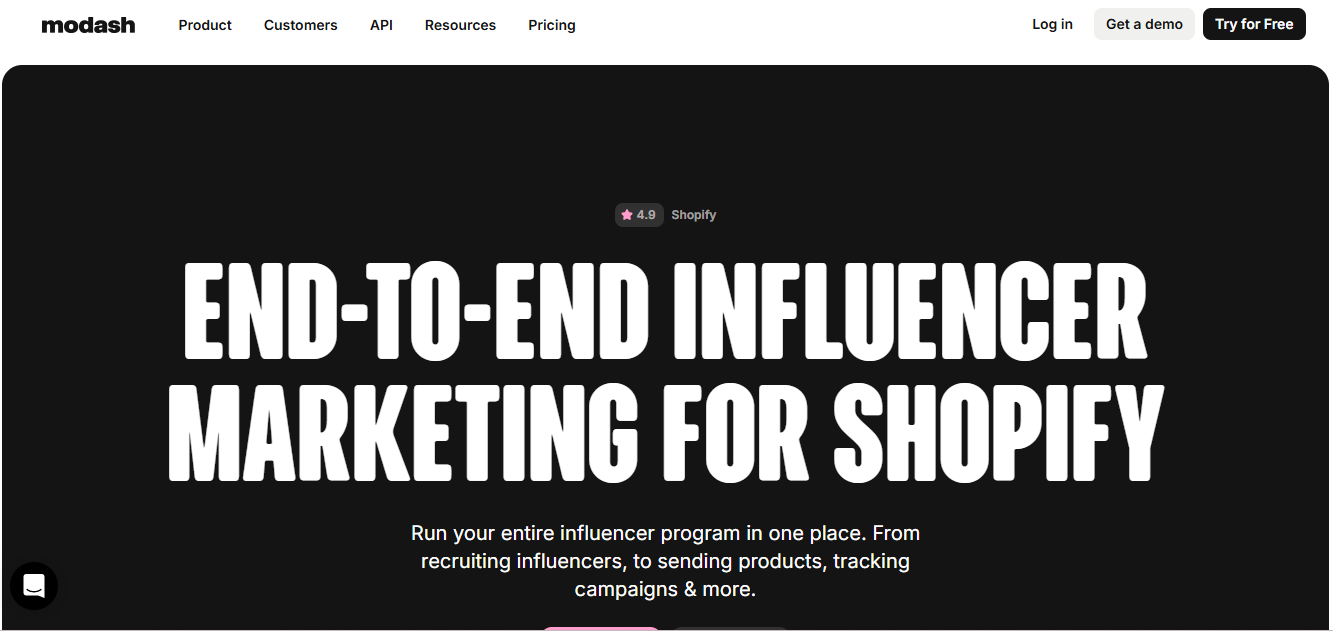
Best For: Modash is best for eCommerce brands, particularly those using Shopify, looking to scale influencer marketing campaigns with AI-powered discovery, outreach, and seamless tracking features.
Platform Coverage:
Pricing: There are different plans and options.
Reviews: 4.7/5 (G2)
Ease of Use (UX/UI): Modash has received positive feedback for its clean and intuitive interface. Users appreciate the simple navigation and smooth workflow from influencer discovery to payment processing. However, some new users find the advanced search filters and AI-powered tools complex to fully leverage without initial guidance.
Customer Support: Modash offers strong customer support, with users praising their dedicated account managers and direct communication channels. The platform ensures personalized support via WhatsApp and email, making it easy for brands to get help quickly.
Hollyfy is ideal for brands that seek to expand influencer collaborations across a wide range of media formats, including TV, podcasts, and movies, and it provides an AI-powered influencer matching system. However, its pricing transparency is limited, and it offers more specialized enterprise solutions.
On the other hand, Modash focuses more on eCommerce brands using Shopify and excels with bulk outreach, real-time campaign tracking, and automated influencer payments, making it perfect for scaling influencer campaigns with automation.
While Hollyfy integrates with multiple platforms, Modash is limited to Shopify but offers stronger tools for affiliate tracking and AI-powered discovery. Hollyfy might be a better fit for those requiring a more holistic media integration, while Modash is better suited for scaling influencer marketing specifically on Shopify.

Best For: Captiv8 is best suited for large enterprises and brands looking to scale influencer marketing campaigns across various platforms. It offers advanced campaign tracking, influencer discovery, and data analytics, making it ideal for brands focusing on performance-driven influencer partnerships.
Platform Coverage:
Pricing: There are different pricing options:
Reviews: 4.1/5 (G2)
Ease of Use (UX/UI): Users report that Captiv8's platform is intuitive, especially for those familiar with influencer marketing. The filtering options for creator discovery are highly detailed, making it easy to find the right influencers based on specific criteria like demographics, location, and interests. However, the platform is considered complex by some users, particularly in managing multiple campaigns simultaneously and requires an initial learning curve.
Customer Support: Captiv8's customer support has received mixed reviews. While there is a dedicated account manager for each client, some users have mentioned delayed responses and difficulties in resolving issues, particularly with payment processing. Overall, the support is personalized but could be more responsive according to feedback.
Both Captiv8 and Hollyfy offer unique features for influencer marketing, but the key differences lie in their pricing models and platform focus. Captiv8 is more enterprise-oriented, with an annual $25,000 commitment and additional fees for advanced features like storefronts, making it suitable for larger brands.
On the other hand, Hollyfy offers a more flexible model with custom pricing and free trial options. Captiv8 provides extensive tracking capabilities and AI-powered outreach, but Hollyfy excels in multi-platform integration and AI-powered influencer matching.
For businesses that need end-to-end campaign management and can afford the higher price tag, Captiv8 may be a better fit, while Hollyfy is more suitable for brands looking for a diverse range of media integrations and secure payment systems.

Best For: CreatorIQ is best for brands looking for a comprehensive influencer marketing platform that supports the full influencer lifecycle, including discovery, activation, campaign management, and performance measurement. It's ideal for businesses with a focus on scaling influencer campaigns across major platforms like Instagram, TikTok, and YouTube.
Platform Coverage:
Pricing: There are different plans:
Reviews: 4.7/5 (G2)
Ease of Use (UX/UI):CreatorIQ is known for its intuitive interface that is easy to navigate even for users with limited technical expertise. The platform's search and CRM functionalities are particularly highlighted for their efficiency, allowing users to find and manage influencers quickly. Some users noted a learning curve with more advanced features, but overall, it has a reputation for being user-friendly.
Customer Support: CreatorIQ offers strong customer support, including dedicated account managers and a customer success team. Users have praised the platform for its hands-on approach, especially during onboarding and campaign strategy sessions. However, some users noted that the platform's self-service options could be enhanced for faster issue resolution.
Hollyfy specializes in content-driven campaigns and offers a wider range of media formats, including music videos, TV shows, and podcasts. Hollyfy also emphasizes AI-powered influencer matching and secure escrow payments, which sets it apart from CreatorIQ's more traditional payment model.
On the other hand, CreatorIQ focuses on a comprehensive, end-to-end solution for influencer marketing, offering full lifecycle management from discovery to campaign reporting. It supports deep integration with social platforms like Meta, TikTok, and YouTube, ensuring real-time, reliable data. In terms of pricing, CreatorIQ offers annual contracts starting at $2K–$5K/month with a 2% fee for payouts over $100K.
If you're looking for a scalable, end-to-end influencer solution with deep platform integrations and strategic support, CreatorIQ is the better choice. However, for brands seeking a more flexible, media-diverse solution with AI-driven matching, Hollyfy could be a strong contender.

Best For: HypeAuditor is best for brands and agencies looking to scale their influencer campaigns across multiple platforms (Instagram, TikTok, YouTube, Twitch, X, Snapchat) using advanced AI-powered tools to discover, manage, and track influencers effectively.
Platform Coverage:
Pricing: HypeAuditor’s pricing is customizable, with the standard “Business” plan starting at around $10,000/year. Pricing can be adjusted based on the number of reports, active campaigns, and platform usage. They also offer a 24–48 hour free trial for new users.
Reviews: 4.6/5 (G2)
Ease of Use (UX/UI): HypeAuditor is generally praised for its intuitive and user-friendly interface, which makes it accessible even for those with limited technical expertise. The platform offers a streamlined experience for influencer discovery and campaign management. However, some users report that it may require some initial onboarding to fully utilize all features, especially for beginners.
Customer Support: HypeAuditor offers robust customer support through WhatsApp and email. Many users appreciate the personalized service from dedicated account managers, ensuring smooth communication and effective campaign management. The platform also provides a 24-hour/48-hour free trial to help users familiarize themselves with its features before committing to a subscription.
Hollyfy stands out with its AI-powered influencer matching and the escrow payment system, making it a great choice for those looking for secure transactions and end-to-end campaign management. It also covers a wider range of media formats, including music videos, podcasts, and TV shows, providing a unique solution for brands looking for diverse content collaborations. However, Hollyfy’s pricing lacks transparency, and the platform may require more time for new users to get familiar with its features.
On the other hand, HypeAuditor is tailored to influencer discovery and campaign tracking with AI-powered filtering and social listening tools, focusing more on social platforms like Instagram, TikTok, YouTube, and Snapchat. While HypeAuditor’s pricing starts at $10,000/year, its modular pricing and customizable plans make it more suitable for brands with a larger influencer marketing budget. HypeAuditor also excels in campaign reporting and eCommerce ROI tracking, offering more specialized tools for measuring influencer success.
Users should opt for Hollyfy if they need multi-platform content collaborations and a secure payment system for high-value projects, especially across diverse media. However, HypeAuditor is better for brands focused on scalable influencer discovery and eCommerce tracking, offering advanced tools for social media-based campaigns.

Best For: GRIN is ideal for eCommerce brands, particularly DTC (Direct-to-Consumer) businesses, looking to scale influencer campaigns efficiently. With native integrations for platforms like Shopify and PayPal, it simplifies influencer management, gifting, and performance tracking.
Platform Coverage:
Pricing:
Reviews: 4.5 / 5.0 (G2)
Ease of Use (UX/UI): Users generally find GRIN’s interface intuitive and user-friendly, especially for managing large-scale influencer campaigns. While the platform is comprehensive, it can sometimes be overwhelming for new users due to its multitude of features. The onboarding process is straightforward, but a learning curve is expected for those unfamiliar with influencer marketing tools.
Customer Support: GRIN provides strong customer support, offering resources like dedicated account managers and extensive help documentation. However, some users report delays in response times and occasional issues with unresolved tickets. Despite these challenges, many users appreciate the support provided for campaign management and troubleshooting.
Both Hollyfy and GRIN are powerful influencer marketing platforms, but they cater to slightly different needs. Hollyfy is focused on a broader range of media formats, from music videos to podcasts, and integrates AI-powered influencer matching. However, it lacks the robust eCommerce integrations found in GRIN.
On the other hand, GRIN shines for eCommerce brands, offering seamless integrations with Shopify and WooCommerce, and is equipped with powerful UGC management and affiliate tracking tools. While Hollyfy offers a more diverse media landscape, GRIN is the go-to for brands focusing heavily on product seeding, influencer gifting, and clear ROI tracking in a seamless eCommerce workflow.
For brands looking for advanced AI-powered discovery, CRM integration, and end-to-end management tailored to eCommerce, GRIN is the better choice, despite its higher pricing. Hollyfy, with its broader media capabilities, is ideal for brands interested in diversifying influencer partnerships beyond traditional social media.
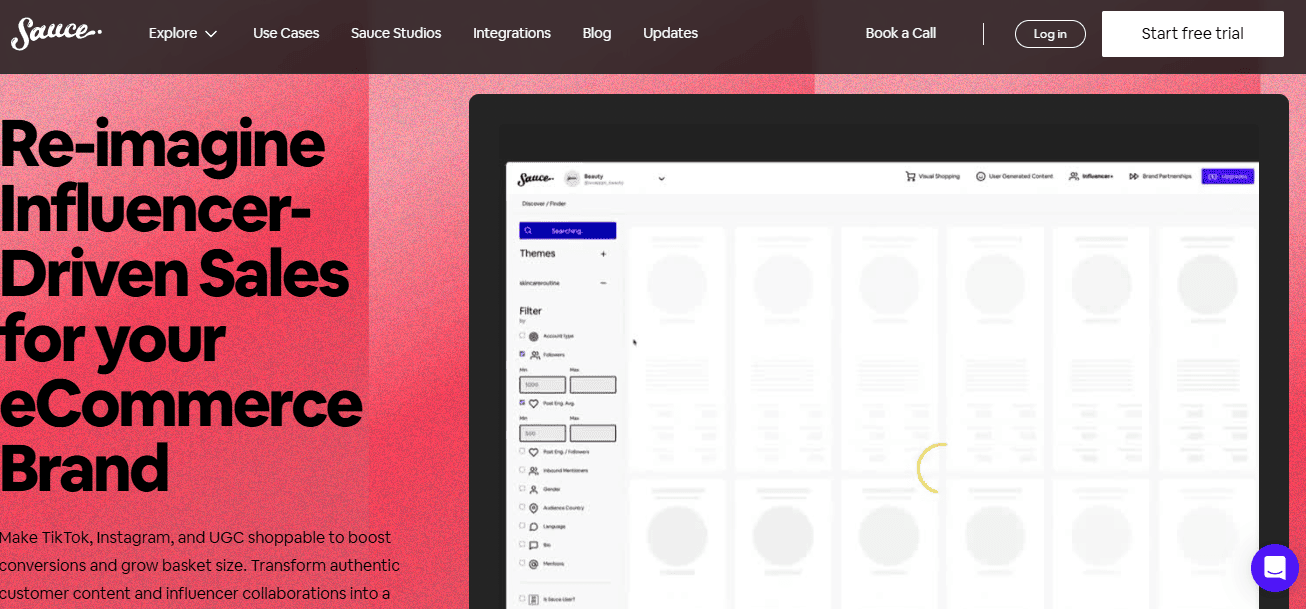
Best For: Sauce is ideal for eCommerce brands, particularly those on platforms like Shopify, TikTok, and Instagram, looking to scale influencer and affiliate campaigns by transforming user-generated and influencer content into shoppable experiences.
Platform Coverage:
Pricing: Based on our research, Sauce offers different plans. All plans include a 7-day free trial with the option to switch or cancel anytime.
Reviews: 4.6 / 5.0 (G2)
Ease of Use (UX/UI): Sauce is known for its zero-code setup, allowing for quick integration with platforms like Shopify and TikTok. Users praise the platform's intuitive interface and ease of use, particularly for those with limited technical expertise. The gallery and video content embedding process is seamless and praised for being simple to set up and manage.
Customer Support: Sauce offers responsive customer support through live chat and email, with merchants reporting positive experiences. The platform also provides a free trial, which helps new users familiarize themselves with its features before fully committing. Users appreciate the quick response times and helpful guidance throughout their campaigns.
Sauce is a visual-first social commerce platform, making it perfect for brands that want to directly turn influencer and UGC content into shoppable experiences across websites, emails, and social media. It integrates seamlessly with eCommerce platforms like Shopify and Adobe Commerce, offering a strong focus on conversion-first influencer strategies. The pricing for Sauce starts at $50/month, making it accessible for smaller businesses, with the Enterprise option priced starting at $2,000/month, which scales with usage.
On the other hand, Hollyfy is a more comprehensive influencer marketing platform designed for brands looking for multi-platform influencer collaborations, including TV, movies, podcasts, and social media. It stands out with its AI-powered influencer matching and secure escrow payment system, which ensures trust between brands and creators.
However, Hollyfy's pricing is custom and requires direct engagement for quotes, making it less transparent than Sauce. Additionally, while Hollyfy supports various content formats and platform integrations, it lacks the direct eCommerce focus that Sauce excels in, making Sauce a better option for eCommerce-driven social commerce.
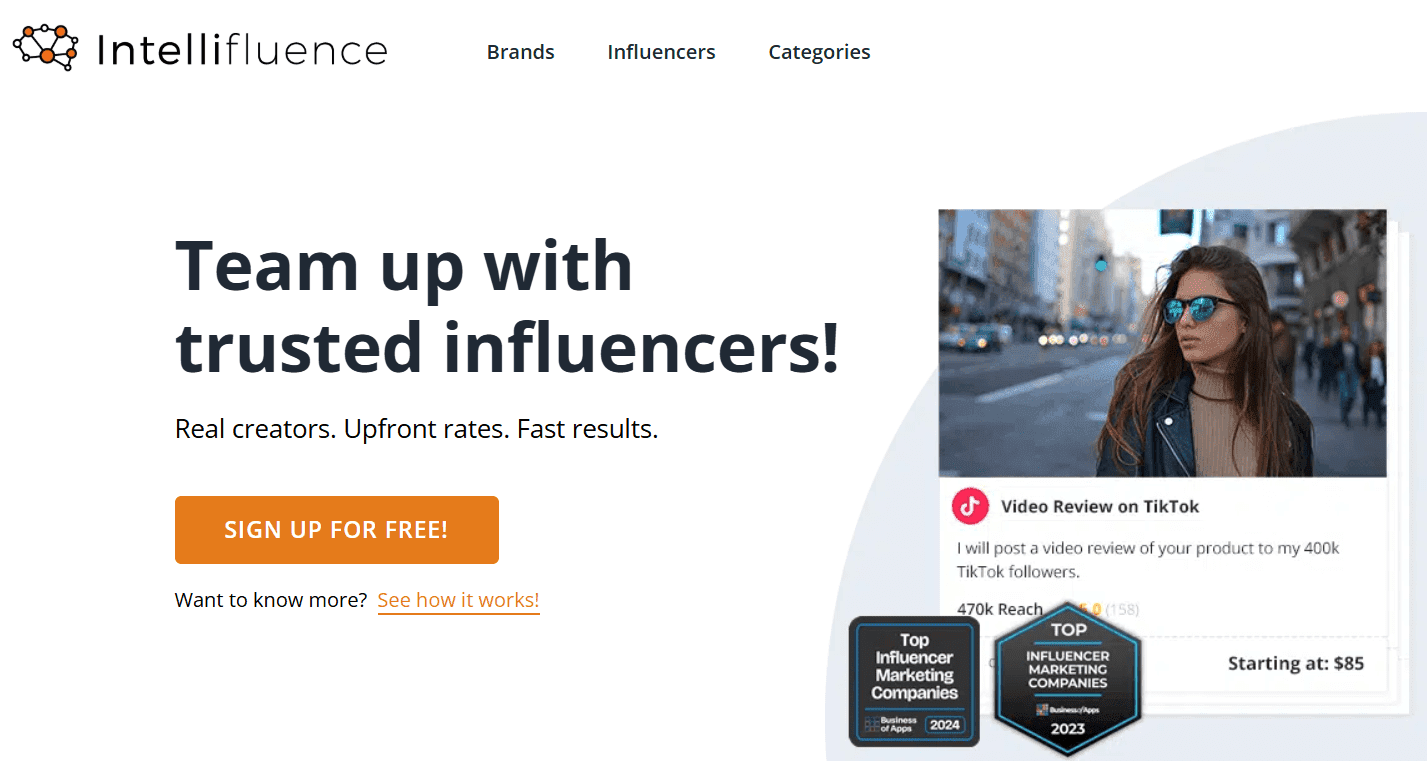
Best For: Intellifluence is best for small to medium-sized brands looking for a flexible, scalable influencer marketing platform. It's particularly beneficial for those seeking to collaborate with micro- and nano-influencers, generate UGC (User-Generated Content), and test campaigns across multiple platforms without long-term commitments.
Platform Coverage:
Pricing: Based on our research, there are different options and pricings:
Reviews: 3.9/5.0 (G2).
Ease of Use (UX/UI): Users generally find Intellifluence’s platform intuitive and user-friendly, with a clean dashboard and straightforward workflows for managing campaigns and communicating with influencers. Some feedback mentions that the mobile version of the platform is not as smooth as the desktop experience, and there may be occasional bugs. Overall, it's easy for beginners to navigate.
Customer Support: Many users praise Intellifluence’s customer support for its responsiveness and helpful guidance, with tutorials and resources available for those new to influencer marketing. However, some have mentioned that campaign approvals and dispute resolution may take longer than expected.
Hollyfy stands out for its ability to integrate influencers across various media formats, including TV shows, podcasts, and music videos, making it ideal for brands seeking broad, multi-media exposure.
On the other hand, Intellifluence offers a robust self-service model with a large opt-in influencer network that’s particularly useful for brands targeting micro- and nano-influencers or those needing a simplified influencer marketing experience.
In terms of pricing, Intellifluence offers a more scalable pricing structure with flexible plans, starting with a free option and moving to paid tiers, while Hollyfy focuses on enterprise-level solutions, offering custom pricing with a 5-day free trial.
Brands looking for a managed service option can benefit from Intellifluence’s flexibility, while those in need of diverse media collaborations may prefer Hollyfy's unique positioning in the market.

Best For: Upfluence is best for eCommerce brands, particularly those on Shopify or Amazon, looking to scale influencer and affiliate campaigns by leveraging influencer discovery, campaign management, and performance tracking.
Platform Coverage:
Pricing:
Reviews: 4.5/5 (G2)
Ease of Use (UX/UI): Users often praise Upfluence for its clean, user-friendly interface. However, new users may experience a learning curve due to its robust feature set. Despite this, most find it intuitive once they familiarize themselves with the tools.
Customer Support: Upfluence's customer support is regarded as helpful, with many users appreciating the dedicated account managers. The platform also offers support via WhatsApp and email, ensuring prompt responses for campaign management needs.
While both Upfluence and Hollyfy serve as influencer marketing platforms, they cater to different needs and user preferences. Upfluence excels in eCommerce integrations, particularly for Shopify and Amazon users, offering powerful tools for influencer discovery, campaign management, and affiliate tracking. It is ideal for brands focused on scaling influencer marketing through robust features like AI-powered outreach and social listening. However, Upfluence comes with a high price point of $1,276/month and requires a yearly commitment, which may not be suitable for brands with more limited budgets or those seeking flexibility.
On the other hand, Hollyfy is more focused on branded entertainment, offering integrations across a wider range of media formats such as music videos, TV shows, and podcasts. Hollyfy's AI-powered matching system and secure escrow payment system make it a solid choice for brands looking to integrate their products into diverse types of media content.
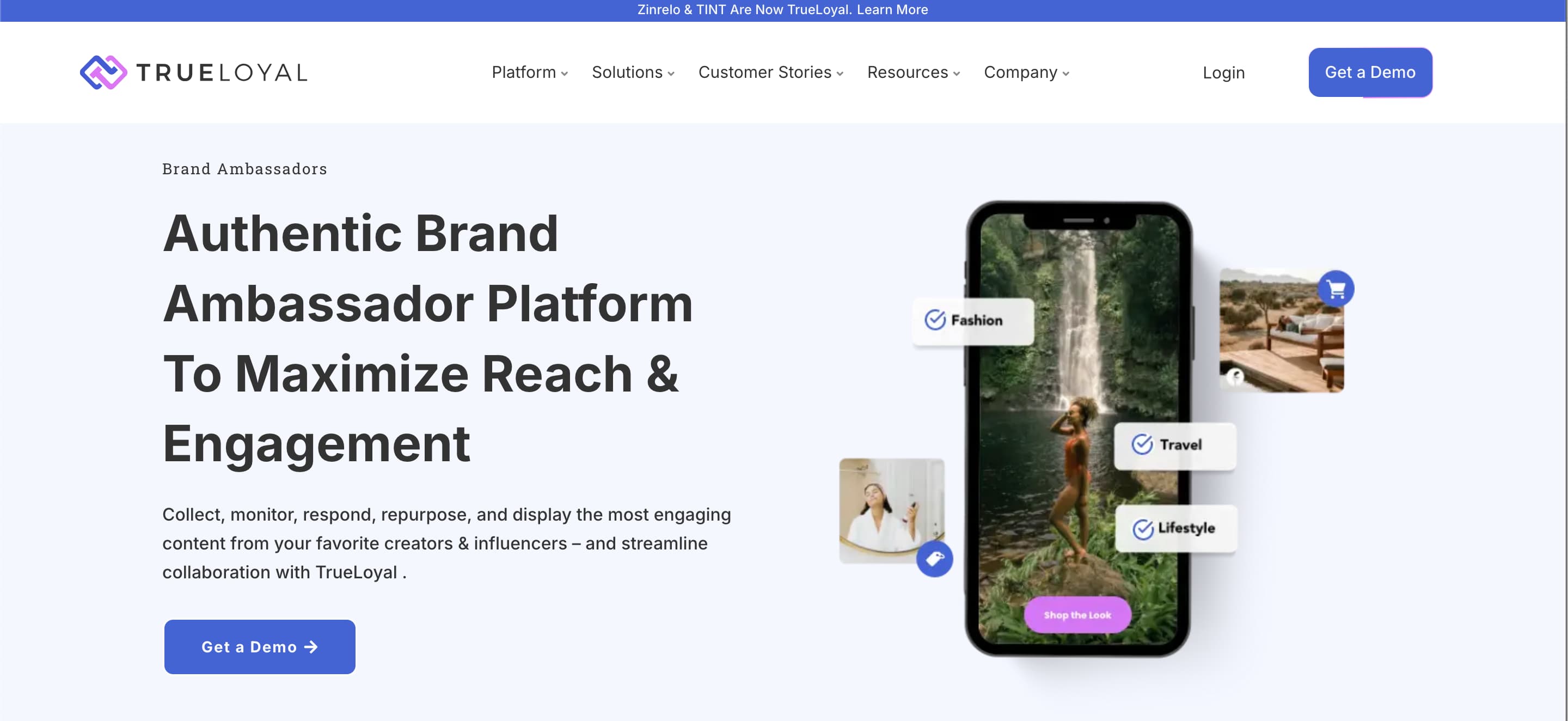
Best For: TrueLoyal is best for eCommerce brands looking to streamline collaboration with influencers and brand ambassadors, centralizing content and automating workflows to enhance customer trust and optimize ROI.
Platform Coverage:
Pricing: Undisclosed.
Reviews: 4.3 / 5.0 (G2)
Ease of Use (UX/UI): Users report that TrueLoyal has a user-friendly interface, allowing for easy navigation and content management. The platform’s simple workflows help brands and creators collaborate seamlessly. However, some users mention that the setup may require a bit of time to fully get accustomed to all features.
Customer Support: TrueLoyal provides responsive customer support with multiple contact options, including email and direct messaging. Brands have praised the availability of support staff who help in optimizing workflows and resolving issues quickly.
Hollyfy offers a more diverse approach to influencer marketing, with the ability to integrate influencers across various media platforms like TV, movies, and podcasts, while TrueLoyal focuses heavily on eCommerce and creating seamless collaboration workflows specifically for influencer marketing and customer content management.
Hollyfy provides a free trial and enterprise solutions with custom pricing, which may appeal to larger brands seeking broad influencer campaign management across various media formats. On the other hand, TrueLoyal offers a more specialized, cost-effective solution, targeting eCommerce brands with tools to manage product page integrations and UGC on websites. TrueLoyal's pricing, however, remains undisclosed, which could make it harder for smaller brands to plan their budgets.
Brands that prioritize detailed content rights management and eCommerce integrations should consider TrueLoyal, while those needing a broader solution across multiple media formats might opt for Hollyfy.
When evaluating Hollyfy alternatives, it's clear that several platforms provide unique features tailored to specific business needs. Intellifluence offers a solid self-service option with an extensive network of micro- and nano-influencers, making it ideal for brands looking to scale their influencer campaigns without long-term commitments. However, for brands that require a more streamlined and comprehensive influencer marketing experience, Influencer Hero stands out as one of the best alternatives.
For those looking to enhance their influencer marketing strategy, Influencer Hero provides an unmatched combination of user-friendly interfaces, robust tools, and top-tier customer support. With its comprehensive feature set, businesses can manage influencer relationships more effectively and optimize campaigns for maximum impact.
Ready to take your influencer marketing to the next level? Book a demo with Influencer Hero today to see how our platform can help you grow and manage successful campaigns.

Influencer Hero offers an all-in-one solution with advanced tools for influencer discovery, outreach, and analytics. It also allows influencers to create personalized storefronts to increase earnings through affiliate partnerships.
Influencer Hero provides content creators with a platform to manage their influencer collaborations, track commissions, and access personalized opportunities with brands.
Yes, Influencer Hero offers a free demo and personalized walkthrough to help you explore the platform’s features and determine how it fits your needs.
Brands across various industries can benefit from Influencer Hero, especially eCommerce businesses looking to scale influencer partnerships and maximize ROI from affiliate programs.
Simply book a demo to get started, and our team will guide you through the platform’s capabilities and show you how to set up your first campaign.



Schedule a Demo with one of our media experts below.